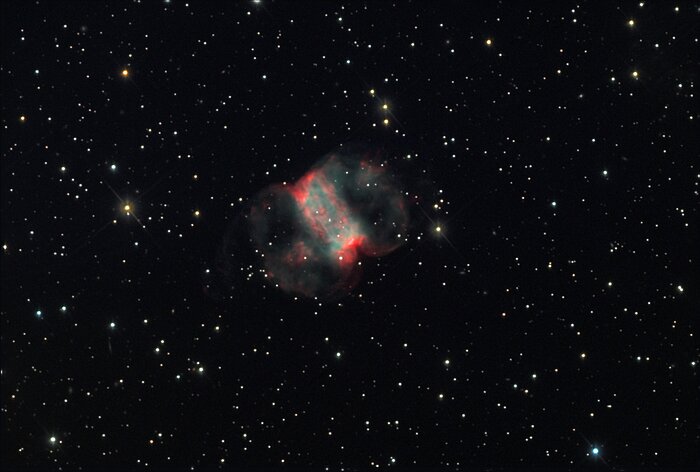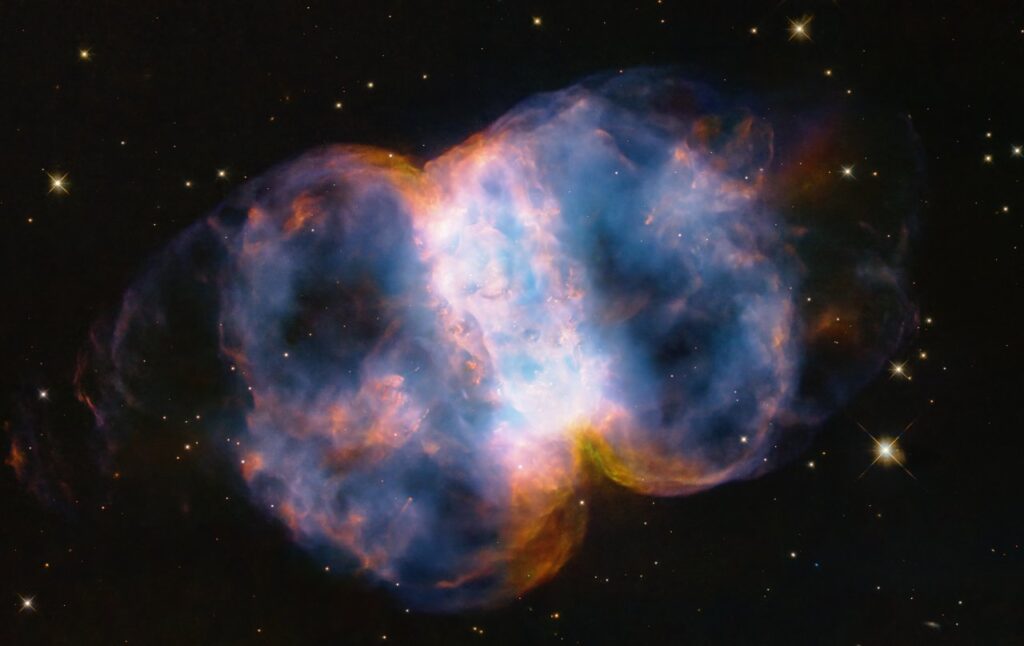M76, also known as the Little Dumbbell Nebula or the Cork Nebula, is a planetary nebula located in the constellation Perseus. Here’s some information about this deep space object:
Location and Visibility
M76 is located in the northern constellation of Perseus. It lies relatively close to the brighter star Mirfak (Alpha Persei) and is situated about 2.5 degrees northwest of it. It’s much fainter compared to its larger counterpart, the Dumbbell Nebula (M27), and thus requires a telescope for observation.
Discovery and Identification
M76 was discovered by Pierre Méchain in 1780. Charles Messier independently rediscovered it later the same year, including it in his catalogue as M76. It was given the nickname “Little Dumbbell Nebula” due to its resemblance to the larger and more famous Dumbbell Nebula (M27) in the constellation Vulpecula.
Nature and Composition
Little Dumbbell is a planetary nebula, which forms when a dying star sheds its outer layers, creating a glowing shell of ionised gas. The gas primarily consists of hydrogen and helium, along with trace amounts of other elements like oxygen, nitrogen, and sulphur. The nebula’s central star is a binary system consisting of a white dwarf and a main-sequence star. The interaction between these stars contributes to the nebula’s complex structure.
M76 exhibits a bipolar or hourglass-like structure, with two lobes of gas extending from a central region. This structure is believed to be the result of the star’s ejection of material in two opposing directions.

Evolution and Future
The central stars of planetary nebulae like M76 will eventually cool down and become white dwarfs, while the nebula itself will gradually disperse into space. The remnants of planetary nebulae contribute to the enrichment of the interstellar medium with heavy elements synthesized in the stars’ cores.
Observations and Imaging
Due to its faintness, M76 is best observed with telescopes of moderate to high aperture under dark sky conditions. If you have access to large-aperture binoculars and observe from a dark site with minimal light pollution, you might be able to detect M76 as a faint, small, and fuzzy patch of light. Astrophotography allows for detailed imaging of the nebula, revealing its intricate structure and faint outer extensions.

The best months to observe M76, depend on its position relative to the night sky and the visibility of its parent constellation, Perseus. Perseus is visible in the northern hemisphere and reaches its highest point in the sky during the fall and winter months. Therefore, the best months to observe M76 are typically from October to February.
During these months, Perseus rises earlier in the evening and remains visible for longer periods, providing more opportunities for observation. Additionally, the longer nights during fall and winter offer darker skies, which can enhance the visibility of faint objects like M76.
However, it’s worth noting that M76 can be observed throughout the year as long as Perseus is above the horizon. So even during the spring and summer months, when Perseus is visible in the early morning hours, you may still be able to observe M76 if you’re willing to stay up late or wake up early.



